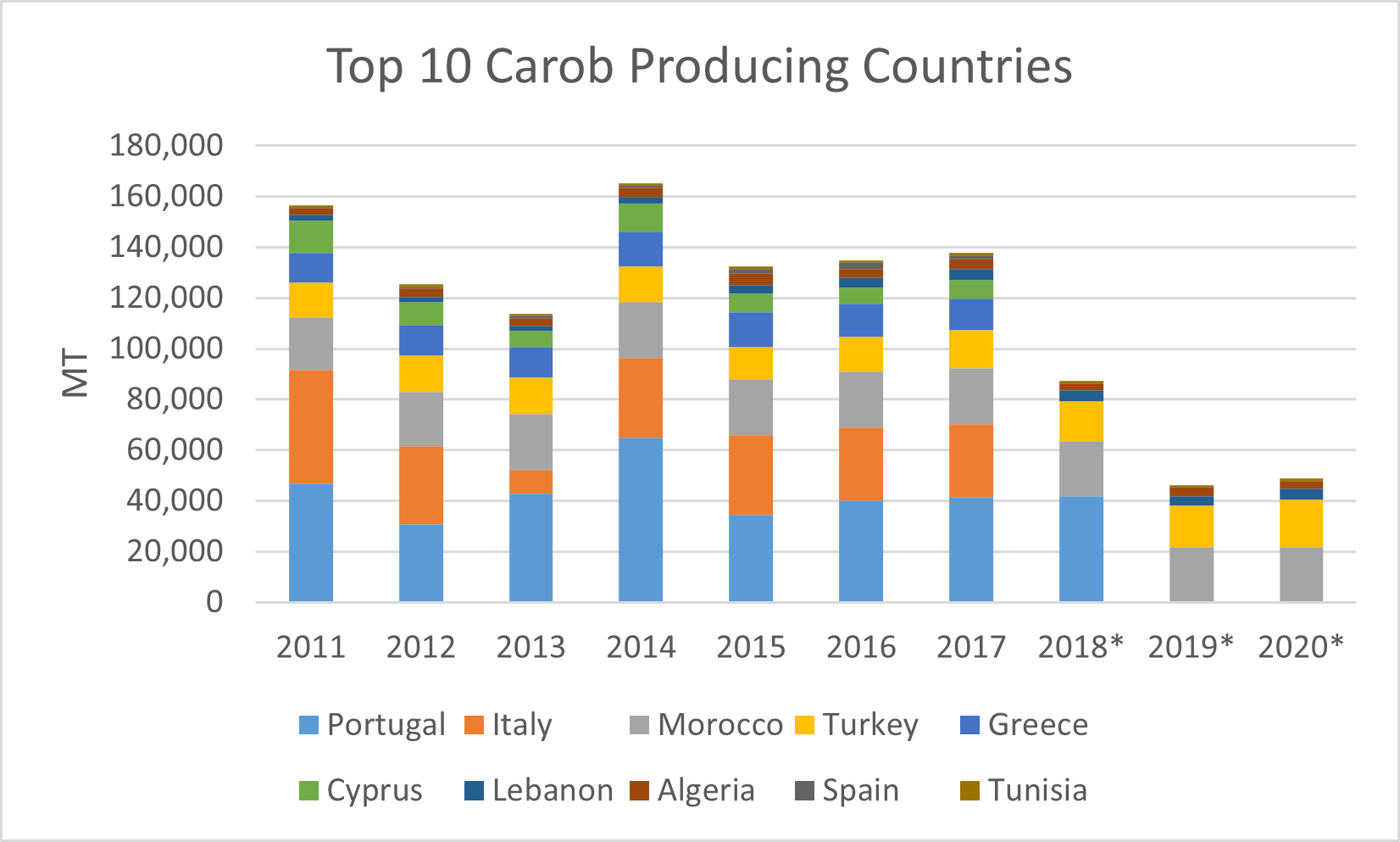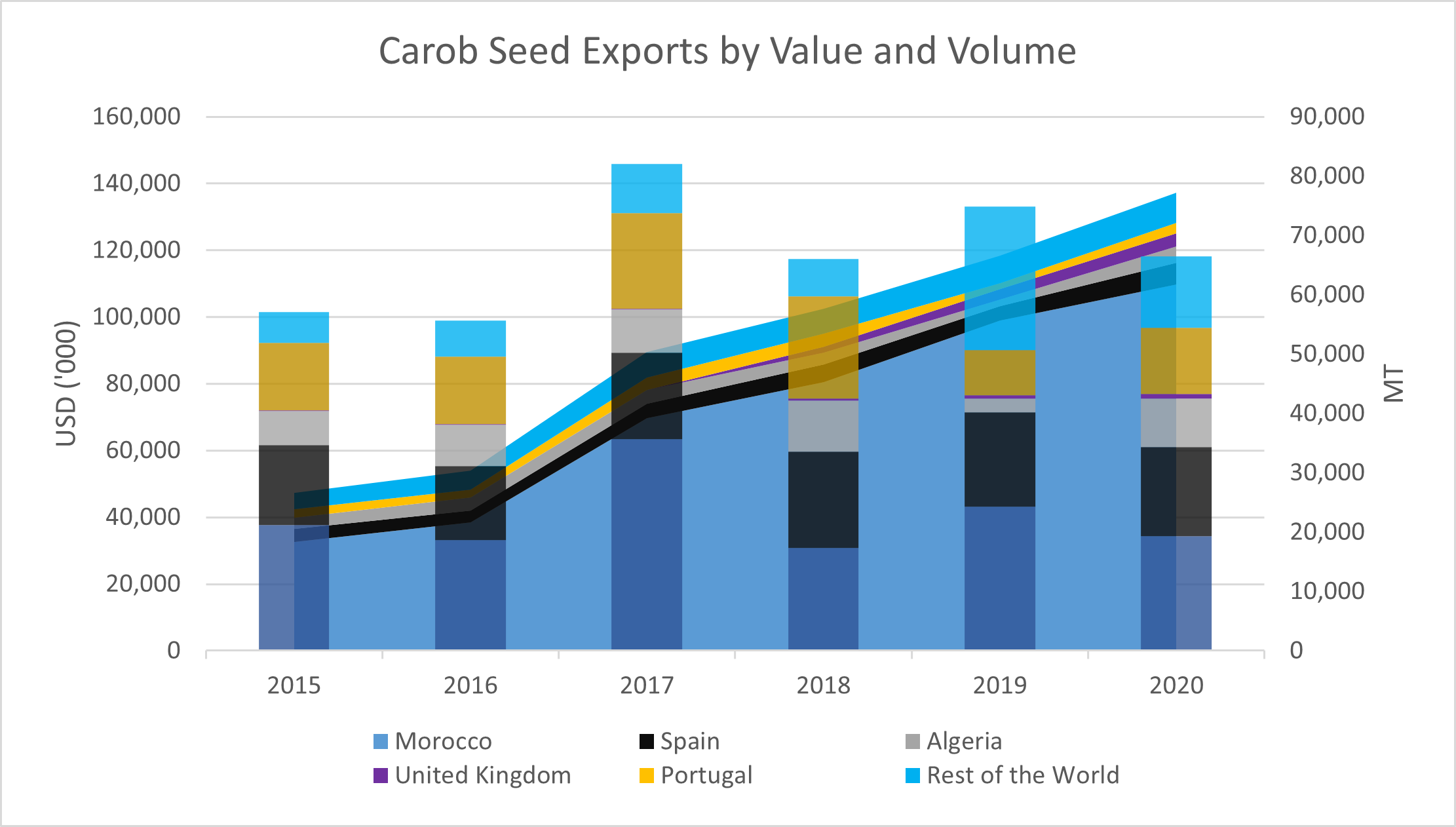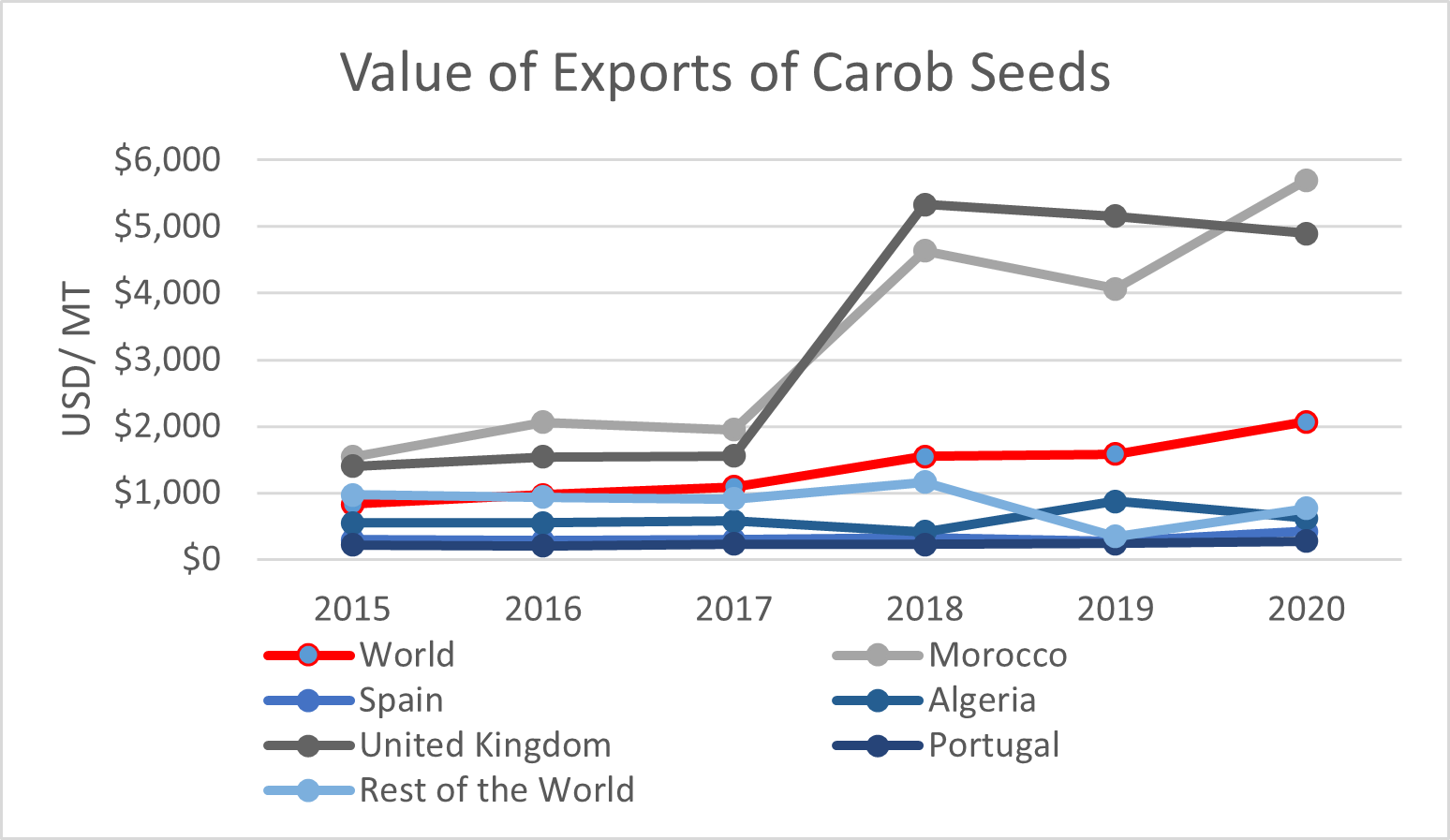Portuguese carob prices soar on strong demand

Carob and carob bean powder
Carob trees are leguminous trees that are commercially grown for their pods and seeds. While there are numerous orchards dedicated to solely carob trees, it is also popularly used in intercropping with other trees in orchards. This is due to carob being a legume, which naturally fixes nitrogen in the soil. These trees also require minimal management and pests are seldom a problem.
Carob pods and seeds have many different applications, primarily in the food industry. The seeds are mostly converted into carob bean gum, which is used as a thickening agent. For example, carob bean gum is used to give ice cream its creamy texture. While the seeds are the initial commercial consideration, the pods themselves have a high sugar content of around 46%, and a protein content of roughly 7%. This means the pods are valuable by-products, which can be used for both human and animal consumption. Carob powder is gaining popularity with many products emerging on the market recently. Carob powder applications are similar to that of cocoas powder and are used widely in confectionery, baking, and other sectors of the food industry.

Source: Tridge
Global Production
The main commercial production region is around the Mediterranean. Many wild carob trees are also scattered around the Mediterranean and North Africa. Carob trees were further spread to other regions with a more or less Mediterranean climate, for example, the southern US, Argentina, India, and South Africa among others. In many areas, these trees are not commercially grown for their pods and most were planted without commercial exploitation in mind. Because trees are scattered all over, it makes world production estimates near impossible. However, the top 10 producing countries according to FAOSTAT produced an average of 137,000 MT for the 5 years ending 2017. Data from 2018 is unavailable for some of the largest producers. Estimates for world production range from 300,000 to 400,000 MT.

*Production data for Italy, Greece, Cyprus, and Spain is unavailable
Source: FAOSTAT
Carob Trade
Carob beans are traded dried, and either whole or ground. The value of carob bean exports (thus including carob powder) has increased nearly threefold over the last five years and in 2020 was USD 137 million. On a volume basis, carob seed exports peaked in 2017, at 82,083 MT. Thus, it is clear that the value of these exports is skyrocketing. Morocco is the largest exporter on a volume basis, but much more significant is the increase in value of these exports. Over the 5 years ending 2020, the unit value of world exports has doubled.


Source: ITC Trade Map
Carob bean gum is also exported, however, most countries report carob bean gum together with guar seed gum, under HS Code 130232 (Mucilages and thickeners, derived from locust beans, locust bean seeds or guar seeds, whether or not modified). Only a few countries report HS Code 13023210 (13023210 Mucilages and thickeners of locust beans or bean seeds, whether or not modified). Spain is the top exporter of locust bean gum, with a value of USD 195 million in 2020.
Prices in Portugal soar due to strong demand
Portugal’s carob trees, much like many other countries, is scattered. In many instances, carob tree owners merely happen to have these trees on their property and they were not planted for the purpose of harvesting carob pods. There are approximately 10,000 carob producers with the capacity to commercialize carob pods, and the Agrupamento de Alfarroba e Amendoa have been attempting to unionize producers in order to stabilize production and compete for better prices. However, this group only has 300 to 400 members and sells about 5-6% of national production. For many carob tree owners, it is still not seen as a “commercial crop” in the traditional sense. On a small scale, it is not necessarily worth the effort to harvest and find a buyer for a few kilograms of carob pods.
However, demand in Portugal is on the rise, and over the last year, strong exports, as well as new players in the carob product industry, have caused prices to soar. Carobs from Portugal constantly flow over the border to Spain, since Spain has a more advanced processing capacity than Portugal. But, Algeria’s imports throughout 2021 took large bites into Portugal’s supply. Algeria imports infrequently from Portugal, but when they do, it is normally large volumes, topping 2,300 MT. After importing nearly nothing throughout 2019 and most of 2020, from November 2020, Algeria imported 6,950 MT in three large shipments.

Source: ITC Trade Map
Portugal's domestic demand has also soared. Carobworld, a company that “develops, produces, and distributes products based on carob”, in particular, has become a large purchaser of domestic carob. For the last two and a half years, Carobworld has been producing carob products, much similar to the way chocolate products are produced. Furthermore, Carobworld opened another plant on June 24th, 2021 which has the capacity to produce 3 tons of Carob products per day.
Another domestic company that is making waves is Grand Carob. Grand Carob’s flagship carob drinks are gaining popularity and have made them a finalist in the Intermarché National Production Award 2020. While the company was founded as recently as 2018, sales of their all natural, plant based products, are picking up steam. These two companies’ success has contributed to increased demand for carobs within Portugal, which is causing prices to skyrocket.
Carob prices have increased nearly threefold over the last three months. Currently, carob pods go for as much as EUR 3.00/ kg, compared to only EUR 1.00/kg a few months ago. These prices in Portugal are exorbitant, which is an indication that domestic supply is tight and demand is not subsiding. For example, in neighboring Spain, carob prices are much lower, at around EUR 1.50 / kg.
Carob trees can take 6 - 7 years to bear pods (although it might be 3 - 4 years if trees are grafted). This means supply cannot adapt rapidly to the increased demand. The other side of the coin is that many carob trees in Portugal are not being harvested, but at this higher price it might be worthwhile.
Sources
Carobworld - Carob Products - Online Store
Carobworld: Facebook Page
Prémio Intermarché Produção Nacional: Edição 2020
Researchgate: Carob tree. Ceratonia siliqua L.
ScienceDirect: Locust Bean Gum - an overview

